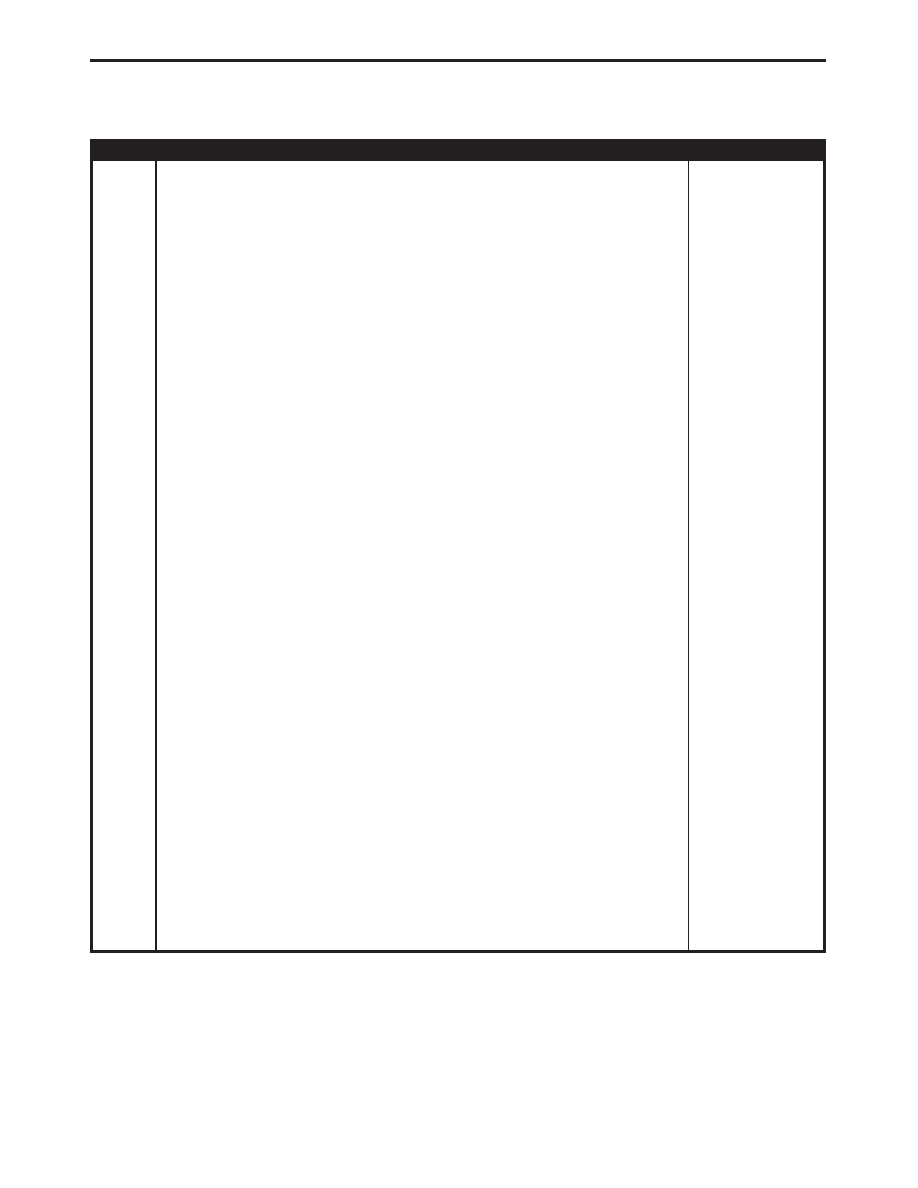Chrysler RG Voyager. Manual - part 120

TEST
ACTION
APPLICABILITY
4
WARNING: DO NOT OPERATE THE DCHA IN AN ENCLOSED AREA SUCH
AS A GARAGE THAT DOES NOT HAVE EXHAUST VENTILATION FACILI-
TIES. ALWAYS VENT THE DCHA’s EXHAUST WHEN OPERATING THE
DCHA. FAILURE TO FOLLOW THESE INSTRUCTIONS CAN RESULT IN
PERSONAL INJURY OR DEATH.
NOTE: The AC Cooldown Test is actuated with the DRBIII
t. The test checks
A/C system performance based on evaporator temperature sensor input. It
also forces the ATC to initiate a Cabin Heater Activation request when the
vehicle is equipped with a DCHA.
NOTE: The A/C related portion of this test will not run if ambient temp is
below 12°C (53°F). However, the forced Cabin Heater activation will occur
even if the A/C portion of this test fails to initiate because test criteria was
not met.
NOTE: The A/C related portion of this test will pass if evap temp drops 6.7°C
(20°F) within 2 minutes of starting this test.
NOTE: Only A/C related messages display on the DRBIII
t after running this
test. These messages will clear after paging back out of this test. Therefore,
it is important to note all of the test messages before doing so.
NOTE: Running this test will cause the DELAY & Snowflake VF segments on
the ATC to flash for 162 seconds. If the A/C related portion of this test fails,
the DELAY & Snowflake VF segmnts will continue to flash until the vehicle
is driven more than 3 miles.
Start the engine.
Press the ATC’s Power switch on.
Turn the Front Blower control to the high speed position.
CAUTION: Do not activate the A/C Cooldown Test with the engine off.
Failure to follow these instructions can result in internal damage to the
DCHA Heater Module.
NOTE: Do not disconnect the vehicle’s battery or the DCHA’s main power
supply while the DCHA is in operation or in run-down mode. Failure to
follow these instructions can result in excess emissions from the DCHA
during heater operation.
NOTE: Before actuating the AC Cooldown Test, verify that the A/C compres-
sor is not running, If the compressor is running, turn the A/C off and allow
the evaporator to warm up before proceeding with the test.
NOTE: The DCHA will operate for approximately 7 minutes. 3 minutes to
run and 4 minutes to purge.
With the DRBIII
t in ATC, Systems Tests, perform the AC Cooldown Test. Then,
select Page Back, Page Back, Monitor Display, and PCI Bus Info ATC.
View the
9RG DCHA Req9 monitor.
Does the Rg DCHA Req monitor display ON?
All
Yes
→ Replace the FCM in accordance with the Service Information.
Perform CABIN HEATER VERIFICATION TEST - VER 1.
No
→ Replace the Auto Temp Control in accordance with the Service
Information.
Perform CABIN HEATER VERIFICATION TEST - VER 1.
449
CABIN HEATER
*CABIN HEATER INOPERABLE FROM AUTO TEMP CONTROL (ATC) —
Continued